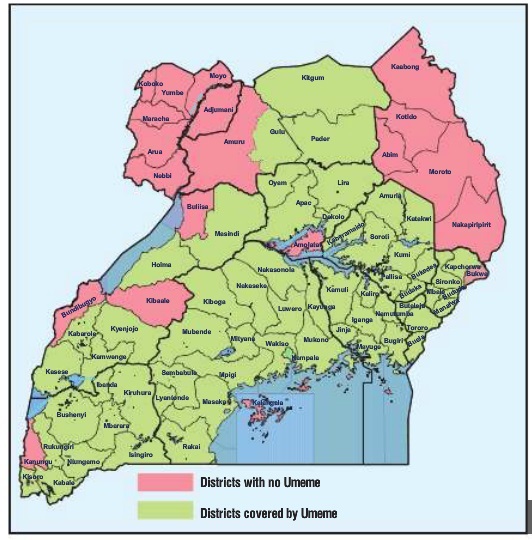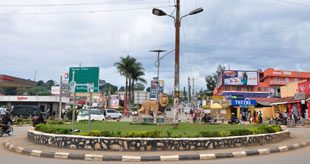
New report shows access to electricity has risen but complaints about poor service delivery persist
Paraffin users 84% to 47 %
Electricity users 10% t0 26%
Solar users 0.2% to 25%
Electricity available 19.4 hours daily
People who think power tariffs affordable 54%
The proportion of Ugandans who use paraffin for lighting has dropped dramatically from 84% in 2008 to 47% in 2015 while those using electricity have risen from 10% to 26% over the same period, according to the latest Uganda Services Delivery Survey. The report, which was compiled by UBOS, shows that those using other sources such as solar have seen the biggest increase from 0.2% to 25%. The report attributes this growth to government’s programmes of extending electricity to rural areas like the Energy for Rural Transformation (ERT).
Nationally, electricity is available for 19.4 hours a day, which is also a significant increase compared to the load shedding of ten years ago when power used to be off for most of the day. But most respondents said the power has not come on the cheap – only about 54% of house-holds think that the power tariffs are affordable.
Only six in ten of households said they are satisfied with the quality of services provided by the electricity distributor, Umeme with the majority complaining about over-billing and high tariffs. But six in every ten households are still using post-paid metering and overall, the average monthly electricity bill was about Shs 30,000, quite high given that most people use the electricity for lighting only. The most common cause of power breakdowns was said to be “faulty transformers,” an indication that Umeme needs to invest more in improving its systems and infrastructure.
According to Umeme’s 2015 annual report, customer numbers rose dramatically between 2008 and 2015, rising from 305,000 to 784,000 over the period. It made over 140,000 new connections in 2015. The company invested $87 million to bring the total outlay to $408 million in 2015 compared to just $52 million in 2008.
The Ugandan government unveiled the first phase of the Rural Electrification Strategy and Plan (RESP) 2001-2010, to increase the electricity access from the 1% (80,000 people) to 10%, and hence help transform the rural communities, but achieved only half of the set target.
According to the survey, 67% of the households said high connection costs and high tariffs were the main reasons that limited use of electricity. Indeed, for households not using electricity and uninterested in the service, the most common reasons for no interest was the fact that electricity is too expensive (86%).
The government cited, among others, high upfront costs, inadequate financing for the rural electrification project, insufficient power supply, geographical inaccessibility of many areas and limited human capacity.
The Rural Electrification Agency (REA), a semi- autonomous Agency under the ministry of energy and mineral development, is mandated to operationalise government’s rural electrification function under a public-private partnership. It is currently implementing the second phase of the $950million Electrification Strategy and Plan (RESP II), which started three years ago, to boost access to electricity in the rural areas.
Patricia Litho, the publicist at REA, told The Independent that in this planning period (20132022), the Rural Electrification Strategy and Plan (RESP II), seek to achieve 1.2 million new connections for grid electricity and over 138,500 new connections for off grid connections.

Litho said majority of the district headquarters are now served with the electricity apart from Nwoya, Kabong, Kotido, and Buvuma.
“We are currently applying a cost-sharing model for extension of this service to communities, with the prospective consumers paying only 30% of the costs and the rest of the costs covered by the government to enable them access electricity,” Litho said.
The government wants to increase hydro power generation capacity from the current installed capacity of just over 800 MW, which includes reducing energy losses. Construction of new dams is already underway in various parts of the country.
Majority of the district headquarters are now served with the electricity apart from Nwoya, Kabong, Kotido, and Buvuma.
According to the survey, 67% of the households said high connection costs and high tariffs were the main reasons that limited use of electricity. Indeed, for households not using electricity and uninterested in the service, the most common reasons for no interest was the fact that electricity is too expensive (86%).
In 2014, the government with support from donors, started free connections to households near the power lines within 15 metres range, with the owners only requested to contact certified electricians to wire their premises and inform power distribution company near them. The programme has seen remarkable success.
Umeme spokesperson Stephen Illungole said the current licence that the power utility holds only mandates it to extend electricity to communities within a range of a kilometre from the national grid with the gap being filled up by REA.
****
editor@independent.co.ug
 The Independent Uganda: You get the Truth we Pay the Price
The Independent Uganda: You get the Truth we Pay the Price



